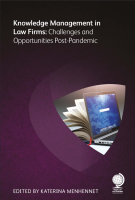Insolvency practice in small jurisdictions
12 November 2017

Author bio coming soon
In our latest blog, Paul Omar, member of the European Commission Experts Group on restructuring and insolvency discusses insolvency practice in small jurisdictions looking at a study in innovation in Jersey.
Small jurisdictions often suffer from deficiencies, in terms of appropriate laws, qualified professionals, supportive courts and policy-making infrastructure, not to mention the volume of economic activity that would support the development of all of the above. Jersey, though a small jurisdiction in size, punches above its weight when a number of these factors are considered. It is one of the off-shore financial jurisdictions acting as a conduit for large-scale investment. It has a well-trained profession, in part due to the systematisation of teaching for the Advocates exams by the Institute of Law, St Helier, in part to the fact that qualification for the Bar is almost always delayed until a few years post-qualification to enable experience to be gained. It has a very supportive judiciary, which is responsive to global developments, while respecting the mixed legal heritage of the island, anchored as it is in the customary law of Normandy. The policy-makers are also reasonably active in keeping an eye out on international measures that can be usefully emulated in Jersey. In this, they also have the support of the legal community to help further the work of the Jersey Law Commission in reviewing the law.
The present law of insolvency, though, presents a bit of a conundrum. For those wishing to practice as an Advocate, especially those from other jurisdictions, the fact one of the compulsory courses for qualification is “Movable Security Law and Bankruptcy” has never ceased to entertain. The three older procedures, two of which are rooted deep in the Middle Ages, if not earlier, are baffling because the legal sources have been (till very recently) mostly in French and the procedures arcane, to say the least. Cession de biens, a distant cousin of the procedure introduced by the Emperor Augustus, is a type of foreclosure process that enables debtors to conduct a transfer of their worldly goods to the creditors, in return for a discharge (provided the debtor has acted diligently and not forced the creditors to do the running). The procedure then segues into two others to dispose of the assets: dégrèvement for real property, which contains the foreclosure element, and réalisation for moveables, which is not often found in use.
The second procedure, remise de biens, is a process by which a surrender is effected, this time into the hands of the court, to result in a disposal of the assets and a distribution of the proceeds to the secured and unsecured. In fact, the prospect of a pay-out for the latter, however de minimis, is a sine qua non for initiation of the procedure, as is the requirement for the holding of real property in Jersey. The third of the procedures, a comparative newcomer, is désastre, which was originally created in the 18th century as a procedural device for the concurrent marshalling of claims in the case of multiple creditors of the same estate, but which has now been transmuted into a modern bankruptcy regime through the passing of the Bankruptcy (Désastre) (Jersey) Law 1990 (Désastre Law). The statute is not a codification by any means, recourse to the jurisprudence being necessary on occasion to flesh out its terms or fill in the lacunae. Similarly, the two older procedures, both the subject of laws passed in the 1830s: Loi (1832) sur les décrets and the Loi (1839) sur les remises, require much more by way of case-law infilling, the framework of the texts being very much barebones.
Only when we get to the modern age is there a statute with recognisable features in the shape of the Companies (Jersey) Law 1991 (Companies Law), which has both the scheme of arrangement and winding up. Would-be Advocates from foreign shores are often comforted by the familiarity, till they realise that some of the procedural steps within winding up refer back to the Désastre Law and that there is no right for a creditor to initiate the process. This is not to mention the further complication of there being a hierarchy of choice, between the procedures based in the older laws, as well as between those in bankruptcy and company law, for those entities potentially subject to both. This explains why Article 4 of the Désastre Law prohibits the opening of a procedure where a cession or remise is afoot and the reason for Articles 154A and 185B of the Companies Law requiring winding up to cede ground to a désastre order..
In that light, one might be forgiven for asking the inevitable question: what happens in Jersey when insolvency law is required, given the difficulties attendant in understanding it? Given the observations earlier on the professions and judiciary, it will not be surprising to learn that innovation has often lain at the heart of developments in insolvency on the island.
For example, for truly indigent debtors, the courts created at a stage, long before consideration of such insolvencies occurred elsewhere, the “social désastre” procedure to enable the discharge of debtors with minimal estates (Re Russell (5 May 1994) (unreported)). In fact, such was its utility, the “social désastre” process has only recently been supplemented by the Debt Remission Order under the Debt Remission (Individuals) (Jersey) Law 2016 for qualifying debts under £20,000. In relation to the homestead exemption in Article 12 of the Désastre Law, the courts have also carefully crafted the conditions under which it is fair to postpone the creditor’s interest in the property, while safeguarding its value for any future realisation.
It is, however, in the corporate insolvency field, that advances have been made, many ingeniously impressive. For example, in common with other Commonwealth jurisdictions, Jersey has extended its scheme practice to envelop entities near the insolvency threshold (Re Drax Holdings Ltd; Re Inpower Ltd [2004] 1 BCLC 10). Although Jersey schemes are often carried out in parallel with schemes in other jurisdictions, particularly the United Kingdom, the case-law has also seen authority for a scheme, in conjunction with the continuance procedure in Part 18C of the Companies Law, to avoid the territorial bar limiting the application of the statute to Jersey companies (Re APIC Petroleum Corporation and APIC (Petroleum) Jersey Limited [2012] JRC 228; [2013] JRC 034). The jurisprudence has also developed to embrace new techniques for ascertaining the will of classes, including in special purpose vehicles under ostensibly sole ownership, but with multiple beneficiaries (Re Investkredit Funding Ltd [2012] JRC 121). As such, scheme practice is seen as a strong adjunct to restructuring initiatives for island entities.
In relation to winding up, though creditors have no right of initiation, the case-law has, from an early date, also explored how best to ensure the interest of creditors is taken into account. As a result, the courts have evolved a jurisprudence focusing on, unusually, the just and equitable winding up provision in Article 155 of the Companies Law, Re Belgravia [2008] JRC 161 and Bisson v Bish 2008 JLR Note 46 being examples. Cases invoking this provision have progressively seen the development of a workout style process, avoiding the cessation of activity inherent in a normal creditors’ winding up and thereby enabling the sale of the business as a going concern, as in Re Poundworld (Jersey) Limited 2009 JLR Note 12. The workout model has also been used, particularly successfully, in the case of entities carrying out regulated business: Re Centurion Management Services [2009] JRC 227, an area of some concern for the financial sector on the island. Taking the model further and, arguably, logically has been its more recent use to facilitate a Jersey equivalent to the pre-pack procedure: Re Collections Group [2013] JRC 039.
The “elephant in the room” is of course the fact that these manoeuvres might not be necessary if Jersey had a dedicated rescue-type procedure. In one way, it does, through the “passporting” process, by which a Letter of Request sent to the High Court in London, properly motivated and comforted by Counsel’s opinion as to the likely response of the English court and suitability of invoking the procedure, will lead to UK administration being made available for Jersey entities with the authority of Section 426 of the UK Insolvency Act 1986 being used to permit the application of a Schedule B1 procedure. This procedure has been so often used that it represents a well-trodden path for Jersey Advocates and courts alike, most recently in 2015 in Siena SARL v Glengall Bridge Holdings Limited and Others [2015] JRC 260. That said, a recent application for a Letter of Request was turned down where the court was concerned about proper supervision being available to monitor the office-holder’s activities that were likely to take place in Jersey, preferring instead the opening of local proceedings placing the Viscount in charge (Re Orb arl (or Representation of Harbour Fund II LLP) [2016] JRC 171).
While the option for rescue in the UK exists, there does not seem to be any urgency, as long as there is this facility, for any home-grown initiative to take its place, or indeed any transplanting of the administration procedure as Guernsey has done in its Companies (Guernsey) Law 2008, albeit with some modifications. However, for financial institutions, special provision has been made recently by means of the Bank (Recovery and Resolution) (Jersey) Law 2017 to introduce recovery and resolution procedures as options. In the last analysis, change may only come if policy-makers are sufficiently convinced that reforms will prove useful for more than a handful of stakeholders at risk.
Overall, the experience in Jersey illustrates that, even without a wide tool-kit of procedures to use, practitioners and the courts are more than able to repurpose existing procedures and laws so as to achieve similar outcomes. Although this does not wholly replace the need for consideration of reforms that may prove necessary, in the short term, such innovation can have a palliative effect.













Any comments - send us an email